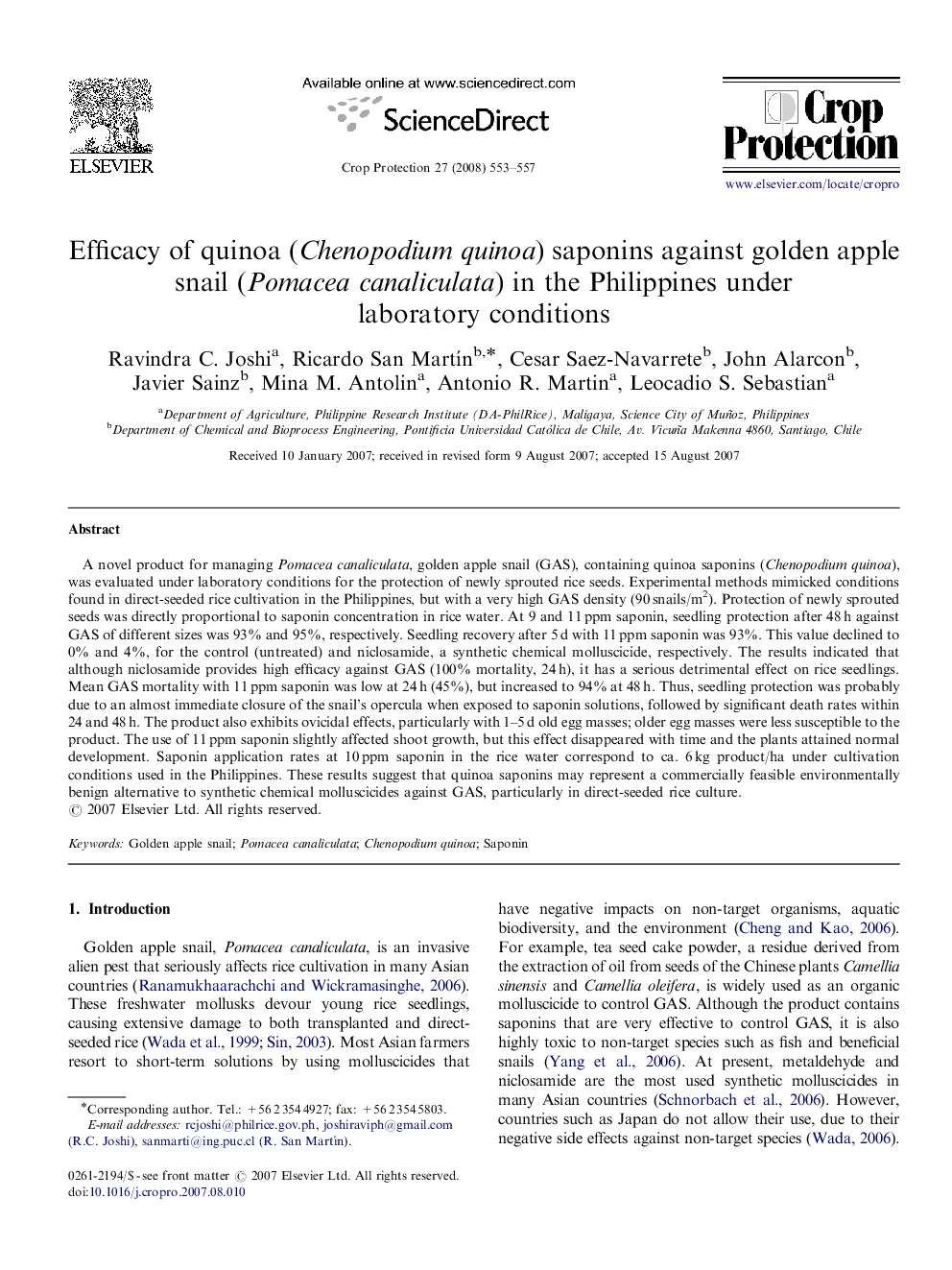| کد مقاله | کد نشریه | سال انتشار | مقاله انگلیسی | نسخه تمام متن |
|---|---|---|---|---|
| 4506950 | 1624357 | 2008 | 5 صفحه PDF | دانلود رایگان |

A novel product for managing Pomacea canaliculata, golden apple snail (GAS), containing quinoa saponins (Chenopodium quinoa), was evaluated under laboratory conditions for the protection of newly sprouted rice seeds. Experimental methods mimicked conditions found in direct-seeded rice cultivation in the Philippines, but with a very high GAS density (90 snails/m2). Protection of newly sprouted seeds was directly proportional to saponin concentration in rice water. At 9 and 11 ppm saponin, seedling protection after 48 h against GAS of different sizes was 93% and 95%, respectively. Seedling recovery after 5 d with 11 ppm saponin was 93%. This value declined to 0% and 4%, for the control (untreated) and niclosamide, a synthetic chemical molluscicide, respectively. The results indicated that although niclosamide provides high efficacy against GAS (100% mortality, 24 h), it has a serious detrimental effect on rice seedlings. Mean GAS mortality with 11 ppm saponin was low at 24 h (45%), but increased to 94% at 48 h. Thus, seedling protection was probably due to an almost immediate closure of the snail's opercula when exposed to saponin solutions, followed by significant death rates within 24 and 48 h. The product also exhibits ovicidal effects, particularly with 1–5 d old egg masses; older egg masses were less susceptible to the product. The use of 11 ppm saponin slightly affected shoot growth, but this effect disappeared with time and the plants attained normal development. Saponin application rates at 10 ppm saponin in the rice water correspond to ca. 6 kg product/ha under cultivation conditions used in the Philippines. These results suggest that quinoa saponins may represent a commercially feasible environmentally benign alternative to synthetic chemical molluscicides against GAS, particularly in direct-seeded rice culture.
Journal: Crop Protection - Volume 27, Issues 3–5, March–May 2008, Pages 553–557